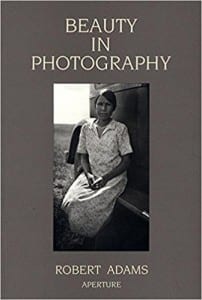The book Changing Place: The Rebranding Of Photography as Contemporary Art by Mischovi discusses how the journey of photography has been accepted as a contemporary form of art. Photography was originally viewed as a matter that would run alongside work that was already produced by artists, instead of having its own place in contemporary art. The text mentions Alan Bowness’s statement on how directors wouldn’t collect work from artists that were purely photography, they would only display work that was a natural extension to a piece of art. This meant that unless there was a piece of Art that was either painted or drawn photography would not exist in The Tate Gallery.
Moschovi continues to discuss how art is so significant and how people will come from all over the world to see if, yet with photography, it is too easily accessible, meaning it will be featured in more than one place, which could therefore reduce the works value and interest from the public to go and view it. The public would travel from all over the world to lay eyes on such paintings as Leonardos Da Vinci’s Mona Lisa . However photography could be created in the Masses meaning it could be a Multiple Museums and Galleries at once creating less of a buzz about a specific piece of work.
Furthermore this was all going to change as during the 80’s and due to the rise in technology photography became more recognized and could be used in many mediums such as fashion, documentary and as an art form. Overall this was a time where people noticed that life is expanding and we are moving forward as societies. It was time for something new and photography was just one of many significant changes that introduced this.
 early on into the reading of this essay is that it is very striking and meaningful, Robert Adams certainly raises a lot of awareness and questions when it comes to debating what truly is beauty in photography. At the beginning, I was immediately drawn to his comments on the goal of art being ‘beauty’ and questions how do we actually judge this? Backing his view up with an enlightening discussion on ‘Form’ and how form is something we all as photographers/artists experience but don’t necessarily pay enough attention to it.
early on into the reading of this essay is that it is very striking and meaningful, Robert Adams certainly raises a lot of awareness and questions when it comes to debating what truly is beauty in photography. At the beginning, I was immediately drawn to his comments on the goal of art being ‘beauty’ and questions how do we actually judge this? Backing his view up with an enlightening discussion on ‘Form’ and how form is something we all as photographers/artists experience but don’t necessarily pay enough attention to it.